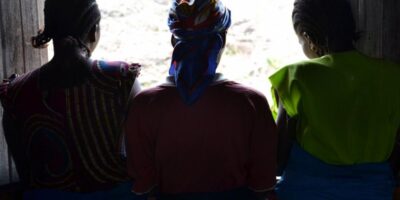Abandoned by the State, the entire Historic National Park has been formally left without management since mid-2022
Without any management authority for nearly a year now, the Historic National Park – Citadelle, Sans Souci, Ramiers (PNH-CSSR) is in critical condition, according to officials familiar with the situation, speaking with AyiboPost.
If this issue persists, « the park will be removed from the list of world heritage sites, » warns Marc-Donald Vincent, logistics manager within the Authority for the Management of the Historic National Park (AGP-Pnh).
In reality, the AGP-Pnh, which was responsible for the ongoing management of the Park, ceased to exist since July 2022, reports Vincent to AyiboPost.
If this issue persists, the park will be removed from the list of world heritage sites.
Established in October 2018, with support from UNESCO, as part of the Preservation of Heritage and Support for the Tourism Sector (PAST) funded by the World Bank, the AGP-Pnh is considered the technical body of the inter-ministerial management committee, which was created in 2012.
The AGP-Pnh was supposed to work on the ground to preserve and develop the Park in various aspects, including environmental, economic, and social dimensions, among others.
« Today, the management authority is dysfunctional and the state of the Park’s grounds is deplorable, while the government authorities remain silent, » says Vincent, who holds a master’s degree in project management.
Read also : Citadelle Laferrière, palais Sans-Souci… balade photo au magnifique Parc national historique
At the end of the project, the Haitian government was supposed to cover the costs of the program from its budget. However, according to members of the AGP-Pnh, alerts forwarded to the Ministry of Culture, headed by Emmelie Prophète, remain unanswered.
The Historic National Park, comprising the Citadelle Laferrière, the Sans-Souci Palace, and Ramiers, has been on UNESCO’s list of 900 World Heritage Sites since 1982.
Today, the management authority is dysfunctional and the state of the Park’s grounds is deplorable, while the government authorities remain silent.
According to the United Nations agency, « these monuments in Haiti (…) dating back to the early 19th century, a time when the Republic proclaimed its independence, hold universal symbolism as they were the first to be built by black slaves who had conquered their freedom. »
Although rare, delisting is one of the decisions at UNESCO’s discretion. Since 2007, three assets located in Germany, Oman, and the United Kingdom were subject to this decision.
The latest delisting dates back to July 2021 when UNESCO elected to remove the city of Liverpool from its list of designated sites. The measure was justified based on the overdevelopment of its iconic port from the industrial era. According to the jurors, as reported by TV5, the redevelopment plans for the area, including very tall buildings and a new football stadium for Everton FC, risked « irreversible damage to the site. »
Read also : Labadie a reçu 400 000 touristes et 133 bateaux de croisière en 2022
« It is too early to talk about delisting [in Haiti’s case], » says Elsoit Colas, the technical director of the Institute for the Safeguarding of National Heritage (ISPAN), as reported by AyiboPost. However, Colas further states that « various difficulties affect the functioning of the park. »
Since 2007, three assets located in Germany, Oman, and the United Kingdom were subject to this decision.
The Historic National Park – Citadelle, Sans Souci, Ramiers, extends over an area of 25 square kilometers, encompassing the municipalities of Dondon, Milot, Plaine du Nord, and Grande Rivière du Nord. It was created by presidential decree in August 1978.
At the time, the various monuments within the park only received sporadic interventions under different administrations, including those of Sténio Vincent in 1934 and 1940, and Paul Eugène Magloire in the early 1950s.
From 1979 to 1990, ISPAN undertook significant redevelopment efforts, in collaboration with the United Nations Development Programme (UNDP), to preserve the Citadelle. These efforts prevented its destruction, which seemed imminent at the time.
These monuments in Haiti (…) dating back to the early 19th century, a time when the Republic proclaimed its independence, hold universal symbolism as they were the first to be built by black slaves who had conquered their freedom.
Established in 1979, ISPAN managed to preserve the various monuments, albeit with challenges, for several years.
However, according to Eddy Lubin, a project manager for ISPAN in the northern region, two major problems made this management ineffective.
Firstly, Lubin explains to AyiboPost that the institution focuses primarily on the « built » aspect of the monuments, neglecting other important aspects. Since the park is inhabited, it is crucial to consider not only the monuments but also the animal and plant species, as well as the people living in the area.
The second problem, Lubin points out, is ISPAN’s insufficient budget.
Read also : Des individus ont profané le monument de Jean-Jacques Dessalines. Le gouvernement ne fait rien.
« Various socio-political troubles which the country experienced in the late 1990s and the early 2000s might explain a certain neglect of these monuments by the authorities, » adds Eddy Lubin.
Later, the 2010 earthquake further weakened the structure of the different monuments in the park.
Up to then, there was no formal management plan for the park, and no dedicated authority to handle its daily management.
« We undertook small interventions here and there, but without significant impact, » says Marc-Donald Vincent, logistics manager within the Authority for the Management of the Historic National Park (AGP-Pnh).
There was no formal management plan for the park, and no dedicated authority to handle its daily management.
Endless conflicts between the inhabitants of the Park, the mismanagement of resources, environmental degradation, and a lack of coordination among users were all factors that jeopardized the existence of the park.
« At that point, a danger loomed over the entire monumental complex, » says Vincent.
In December 2009, through the World Heritage Centre, UNESCO granted the Haitian authorities a four-year deadline to meet a set of evaluation criteria.
« In other words, to retain its status as a World Heritage Site, the Historic National Park must meet a series of conditions requiring a set of actions to be taken promptly to bring it in line with the standards of the World Heritage Convention, » as stated in ISPAN’s 11th report published in April 2010.
Among the recommendations was the mapping of the park, the legal definition of its status, and the development of a management plan.
Endless conflicts between the inhabitants of the Park, the mismanagement of resources, environmental degradation, and a lack of coordination among users were all factors that jeopardized the existence of the park.
In 2014, the World Bank, through UNESCO, ISPAN, and the Technical Execution Unit (UTE), launched the Support for the Tourism Sector Project (PAST) with a 21 million US dollar budget. The objectives of this project included increasing the attractiveness of cultural sites in the North and improving the living conditions of residents in the region, among others.
The creation of a permanent entity responsible for the day-to-day management of the park and the development of a park management plan were among the specific recommendations made to the Haitian government as part of this project.
For the first time since its inclusion in the list of World Heritage Sites in 1982, the park was to be equipped with a management authority in October 2018. This structure included representatives from various ministries, including the ministries of culture and tourism, as well as advocacy and social agents.
For the first time since its inclusion in the list of World Heritage Sites in 1982, the park was to be equipped with a management authority in October 2018.
From 2018 to 2022, the Park Management Authority undertook a series of initiatives aimed at preserving the site, resolving conflicts among different communities residing within the park, and promoting tourism.
« It was agreed that through the establishment of this structure, the Haitian government could learn valuable lessons from the experience to replicate elsewhere, in other monuments across the country, » explains Olange Pierre, a manager at AGP-Pnh.
At the end of the project in 2022, the Haitian authorities were supposed to take over and continue the ongoing initiatives, ensuring the continuity of the Park Management Authority.
« This was not done, » laments Olange Pierre. « Today, AGP-Pnh is dysfunctional, and the park is left to its own devices, abandoned by the authorities, » he revealed to AyiboPost.
Read also : La maison où naquit Alexandre Pétion est un dépotoir au cœur de Port-au-Prince
Elsoit Colas, ISPAN’s Technical Director, says that the country’s socio-political and security situation, as well as the various episodes of « peyi lòk », have made the task increasingly difficult for the technical teams.
Today, AGP-Pnh is dysfunctional, and the park is left to its own devices, abandoned by the authorities.
« If this crisis situation continues for the next two to three years, I fear that UNESCO’s requirements may become even more stringent, » declares Colas.
Meanwhile, according to officials contacted by AyiboPost, the absence of the management authority is strongly felt within the park: conflicts among communities have resumed, and insecurity is rampant.
Furthermore, uncontrolled urbanization in the neighboring municipalities, vandalism, harmful agricultural practices endangering animal and plant species, and increasing pressure on resources due to the precarious living conditions of the inhabitants, all pose significant threats to the existence of the park.
However, according to members of the AGP-Pnh, alerts forwarded to the Ministry of Culture, headed by Emmelie Prophète.
« I cannot say that [the park] is not managed, but it is poorly done, » says Thélémaque Henry Claude, the mayor of Milot, in an interview with AyiboPost. « At the municipal level, we cannot do anything without going through ISPAN and the Ministries of Culture and Tourism, » explains the mayor, who regrets that these authorities « have not always shown a real willingness to act. »
In a press release issued following the publication of this article, the Ministry of Culture and Communication announced the creation of a new park management structure to replace AGP-Pnh. The note indicates that resources will be allocated to this new management structure introduced in April 2023 in the upcoming budget for 2023-2024.
It is not clear why none of the individuals contacted by AyiboPost within the government or the municipality were aware of the creation of this new structure.
English translation by Sarah Jean.
© Cover image : Zoom sur Haiti/Pinterest
Watch our special AyiboLab program filmed in April 2023, highlighting the resilience and positive outcomes of the Labadie beach resort despite the ongoing security challenges in Haiti :
Stay in touch with AyiboPost through :
▶ Our Telegram canal : click here
▶ Our WhatsApp Community : click here







Comments